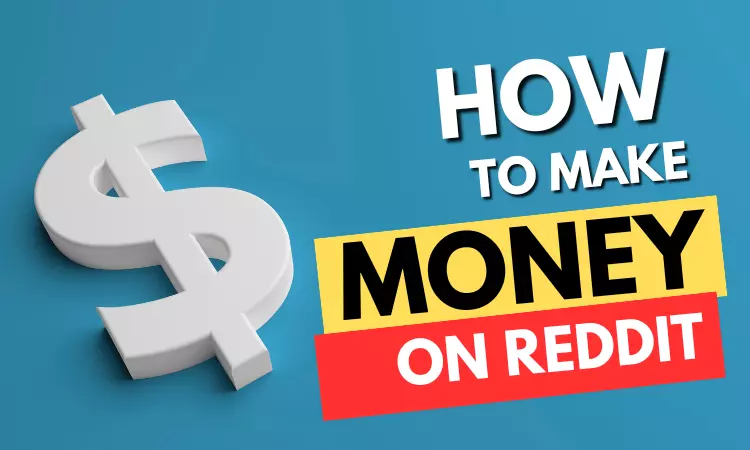Are you looking for information on how to make money blogging?
Look no further!
Blogging is not only a great way to share your thoughts and ideas online, but it’s also a great way to make money online.
Whether you’re looking to turn your hobby into a full-time income or simply want to earn some extra cash on the side, there are plenty of ways to monetize your blog.
In this article, we’ll explore the best ways you can use to make money from your blog and turn it into a profitable business.
We’ll also discuss the steps you need to take to build a monetizable blog, including niche selection, audience building, and creating valuable content.
Whether you’re just starting out or looking to take your blog to the next level, this guide will help you turn your passion for writing into a profitable business.
Let’s begin!
How To Make Money Blogging?
Here are the best ways to make money from a blog:
1. Monetize Your Blog With Advertisements.
Advertising is a widely-used method for making money through blogging.
By signing up with ad networks like Google Adsense, Ezoic, Mediavine, etc., and displaying ads on your blog, you can earn money.
To begin, you need to add a script from the advertising network to your blog and start displaying ads in various formats such as banner ads, native ads, interstitial ads, push ads, pop-up and pop-under ads, etc.
You will be paid either through CPC (cost-per-click) or CPM (cost-per-mile) method.
CPC means you will receive a set fee every time a visitor clicks on an ad and CPM means you will be paid for ad views instead of clicks.
It is important to have a steady readership and good content on your blog before trying to monetize it with ads, to maximize your income and reduce the risk of rejection from ad companies.
==> Click on this link to discover the 15 top ad networks for bloggers.
2. Affiliate Marketing.
Affiliate marketing is one of the popular ways to make money through blogging.
It involves recommending products or services to your audience using affiliate links, and earning a commission for each sale made through those links.
To get started with affiliate marketing, you can begin by identifying products you already use and enjoy that your readers may also be interested in.
Then, check if the companies that offer those products have affiliate programs that you can join.
There are many affiliate networks, such as Amazon Associates, Commission Junction, ShareASale, ClickBank, and JVZOO, that offer affiliate programs.
Once you have joined one or more programs, you can obtain your custom affiliate links and start promoting them to your blog readers.
Each time someone makes a purchase through your affiliate link, you will earn a commission on that sale.
The amount of your commission will vary depending on the product being promoted.
More information about affiliate marketing:
- What Is Affiliate Marketing And How To Start Affiliate Marketing?
- 100+ Best Affiliate Programs.
- 14 Best Affiliate Networks And Platforms.
- More Affiliate Marketing Articles.
3. CPA Marketing.
CPA (Cost per Action) marketing is a type of affiliate marketing where you earn a commission for a specific action taken by a person.
This can include signing up for a service, clicking on a link, watching a video, downloading an eBook, or completing a survey.
It’s a popular way to make money from your blog because you don’t need to generate sales to earn money.
Instead, you are paid primarily for getting your audience to take a specific action.
There are many CPA networks where you can find offers, such as MaxBounty, Perform[cb], PeerFly and CrakRevenue.
To get started, you’ll need to sign up for a CPA network, find an offer, and promote it to your audience through your blog.
If someone clicks on your link and completes the desired action, you’ll earn a commission, with the amount varying depending on the offer.
The amount of your commission varies depending on the CPA offer you are promoting.
More information about CPA marketing:
4. Sell Ad Space On Your Blog.
In addition to using ad networks like Google Adsense, you can also make money by directly selling ad space on your blog to advertisers.
While an ad network is easy to set up, it can have limitations on the amount of money you can earn per ad click.
By selling ad space directly, you have more control over the pricing and terms, and can potentially earn more money.
This can include selling banner ad space on specific parts of your website, such as the upper part of a page, two sidebars, etc.
You can charge different prices for different spaces and let advertisers contact you if they’re interested in buying ad space from you.
The amount you can charge for the ad space will depend on the number of visitors to your site.
Usually, bloggers charge a flat rate for ad spaces instead of using CPC or CPM models.
Selling ad space directly will require more management and administrative work than using ad networks like Adsense, such as negotiating pricing, creating agreements, and handling invoicing.
5. Sell Sponsored Blog Posts.
Another great way to make money blogging is through sponsorships.
Sponsored posts allow you to earn additional income by having a company pay you to feature their product, discuss it, and promote it to your readers.
To start, it’s recommended to create a one-page media kit that includes information about your website’s traffic, social media following, audience demographics, and other relevant data that will make your site more attractive to advertisers.
Then, you can reach out to companies to negotiate sponsorship deals.
When publishing sponsored posts, it’s important to be aware of the laws regarding disclosure in your area.
For example, in the United States, bloggers are required to comply with the FTC’s Endorsement Guides, which include disclosing when a post is sponsored.
6. Flip Your Blogs.
Blogs can be compared to real estate in the digital world, and you can make a lot of money by flipping them.
Blog flipping is the process of buying or creating blogs, improving them, and then selling them for a profit.
You can do this by either buying an existing blog or creating your own, and then selling it after you have made it successful.
If you don’t have the funds to buy a blog, you can focus on building your own, which is relatively easy to do nowadays.
There are a lot of platforms like Flippa, Empire Flippers, etc., where you can sell you blogs for profit.
In order to make money through blog flipping, it’s important to ensure that any blog you want to sell is professional, has high-quality content, is user-friendly, is optimized for search engines, and provides value to its audience.
To attract potential buyers, you need to demonstrate that your website has regular traffic and engagement, as well as proof that it is generating revenue.
Before you market and sell the blog, you should also perform a full SEO service to ensure that it reaches its full potential.
If you’re buying a blog to sell, you will need to carefully consider if there is a potential profit to be made.
Blog flipping can be a complex way to make money online, but the profit margins can be significant.
A general rule of thumb for determining the price of a blog is to use a multiple of its monthly revenue, typically between 24 to 36 times.
The price can also be affected by other factors such as the niche of the blog, its age, and its domain authority.
More information flipping blogs:
7. Sell Your Products Online.
Selling products online is a great way to make money from your blog.
Whether you choose to create your own line of products or sell other brand products as a reseller, there are many opportunities to earn money by selling products to your audience.
You can sell a variety of products, including physical products such as clothing, accessories, homeware, etc, as well as digital products such as e-books, software, courses, etc.
By investing time and effort into creating a visually appealing blog and marketing it effectively, you can attract customers and make sales.
With a blog, you have full control over the products you sell, pricing, and branding.
This method requires more investment and inventory management but gives you more control over your business.
Whichever method you choose, selling products online can be a profitable way to monetize your blog and turn it into a successful business.
More information about eCommerce:
- What Is E-Commerce And How To Start E-Commerce Business?
- What Are Digital Products And How To Sell Digital Products?
- More E-Commerce Articles.
8. Sell Online Courses.
Online courses are a great way to make money from your blog.
If you have a specific area of expertise or a unique perspective on a topic, creating an online course can be a great way to share that knowledge with others and earn money at the same time.
To create an online course, you’ll need to choose a specific topic that aligns with your blog’s niche and that you are passionate about.
The next step is to create the course content, which can be in the form of videos, audio, PDFs, or any other format that works for you and your audience.
Then, you need to upload your course to your blog or other online course-selling platforms.
You can use tools and platforms like LearnDash (A WordPress Plugin), Kajabi, Teachable, Udemy, etc, to create and sell your online course.
Once your course is ready, you can market it to your audience through email marketing, social media, and directly promoting it on your blog.
Creating an online course requires some initial investment in terms of time and resources to research, develop, and market the course, but once the course is created, it can be sold multiple times, making it a scalable and sustainable way to make money from your blog.
More information about selling online courses:
- 9 Steps to Create And Sell Courses Online: The Complete Guide!
- The 23 Best Tools And Platforms to Create and Sell Online Courses.
9. Build An Email List.
Building an email list is a powerful way to make money with your blog.
By capturing subscribers’ email addresses in exchange for something valuable, such as a free ebook or monthly newsletter, you can market your products or services to them over time.
The email list typically consists of loyal readers and audience members of your blog, who are more likely to buy from you since they opted-in themselves.
This is because they are interested in staying updated with your news, making the email list an effective way to make money through blogging.
Many marketers make millions of dollars annually through email marketing alone, as people still check their inboxes daily, unlike social media where posts can quickly disappear.
Building a dedicated and important email list is a key strategy for monetizing your blog and generating passive income.
10. Sell Your Services.
Another way to monetize your blog and make money blogging is by selling your services.
As you build your audience and establish yourself as an authority in your niche, more people will associate your name with the topics you write about.
This can be a great way to attract high-paying clients who are looking for someone with your expertise.
Examples of services you can offer include consulting, graphic design, freelance writing, virtual assistance, and classes or workshops.
By using tools like Acuity and Calendly, you can easily schedule appointments and manage payments, making it more convenient for you to run a service-based business.
To promote your services, you can create a standalone landing page or add a display ad in your sidebar to increase visibility and attract new clients.
11. Offer Membership.
Creating a membership program can provide a consistent source of income for your blogging efforts.
Offer your most engaged readers exclusive perks such as VIP access to exclusive content, handbooks, courses, and special offers in exchange for a small fee.
You can set up membership fees on a monthly or yearly basis, and offer a discount for those who pay yearly.
This can give you a steady cash flow that can be used to create new content and products for members.
This type of community can be an important aspect of social connection and can be a great way to monetize your blog.
Since your blog already has a steady flow of traffic, it’s relatively easy to attract new members and increase your membership numbers.
12. Sell Backlinks.
Selling backlinks is another way to make money through blogging.
Backlinks are links that direct visitors from one website to another and are important for SEO as they help to improve a website’s search engine ranking and drive more traffic.
Companies and individuals are willing to pay for a link from your website to theirs as a way to improve their own search engine visibility.
However, it’s important to ensure that the backlinks are of good quality and placed organically, to avoid any penalties from search engines.
Websites such as Backlinks.com allow you to sign up and sell backlinks from your site.
It’s important to be careful when selling backlinks as search engines are becoming increasingly advanced in their algorithms and may penalize or ban websites that are found to be using links to manipulate search engine rankings.
13. Accept Donations From Visitors.
Another way to monetize your blog is by accepting donations from visitors.
You can do this by adding a Paypal or Stripe donate button to your website or using a plugin like WPForms to create a donation form on your WordPress site.
While this method is less effective in comparison to other monetization strategies as it relies on the generosity of your readers, it can still be a viable option.
It’s important to note that offering something in return, such as exclusive content or access to a membership program, may be more effective in attracting donations.
Conclusion.
there are many ways to make money from your blog, from advertising and affiliate marketing to selling products and services.
Each method has its own set of pros and cons, and it’s important to find the one that best suits your blog and audience.
Whether you’re just starting out or looking to take your blog to the next level, it’s essential to have a clear monetization strategy in place.
Building a loyal audience, creating valuable content, and promoting your blog effectively are key to success.
By experimenting with different methods and being consistent with your efforts, you can turn your passion for blogging into a profitable business.
Remember to always stay up-to-date with the latest trends, tools, and best practices to optimize your blog’s earning potential.
With hard work and dedication, you can turn your blog into a successful online business.
Read More:
- How To Make Money Online?
- How To Make Money On YouTube?
- How To Make Money On Tiktok?
- How To Flip Domain Names And Make Money Online?
- How To Make Money Freelancing?
- How To Make Money With Drop Servicing?
- How To Make Money With Drop Shipping?
- How To Make Money With Print On Demand?
- How To Make Money From Online Surveys?
- How To Make Money By Selling Photos Online?
- How To Make Money By Testing Websites And Apps?
- How To Make Money By Listening To Music?
- How To Make Money By Clicking On The Ads On Websites?
- How To Make Money With Transcription Jobs?
- How To Make Money Podcasting?
- How To Make Money From Your Phone?
- 50 Passive Income Ideas To Build Massive Wealth.
- 47 Online Business Ideas You Can Start Quickly.
- 46 Best Work from Home Jobs That Pay Well.
- How To Make Money As A Kid?
- How To Make Money On Instagram?
- How To Make Money On Facebook?
- How To Make Money On Twitter?
- How To Make Money On Pinterest?
- How To Make Money On Reddit?
- How To Make Money On Quora?
- How To Make Money From Home?







